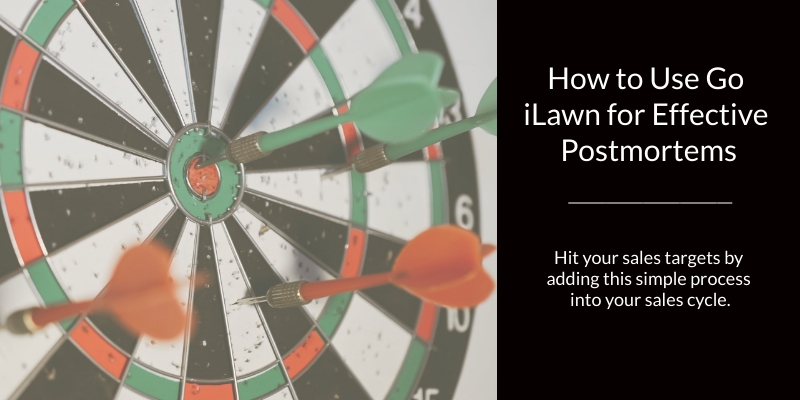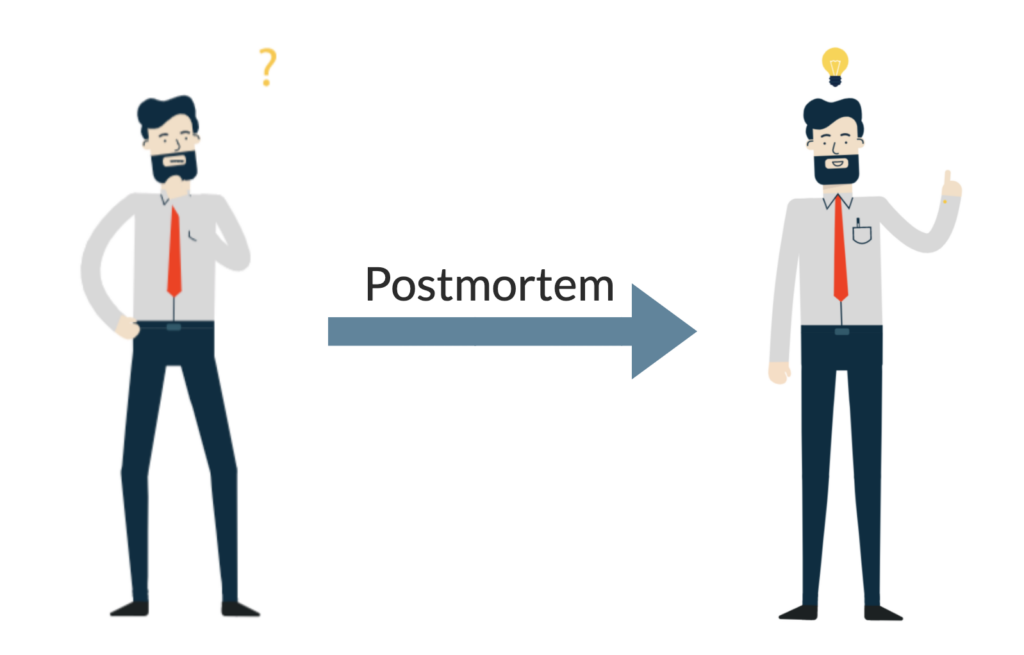How to Boost Your Sales with Effective Postmortems
Performing an effective postmortem after a lost sale will provide you and your team with valuable information and give you the opportunity to make adjustments so you can win the work you want.
Who better to tell you how to sell customers than the customers themselves? Let’s dive in!
What is a Postmortem?
A postmortem is a learning procedure used to evaluate why you lost a sale, identify areas for improvement, and implement changes in the sales process to increase your chances of winning the job next time.
For example, you may have lost a bid due to your competitor offering a lower price. You can use the postmortem process to discover why the lost prospect did not see the value that your team could have provided. Could you have cut or adjusted some of your service offerings to get into their price range? Could you have adjusted the number of visits suggested on the contract to lower the price? Was this even an ideal client?
Without a postmortem, you are likely to repeat your mistakes. How can you grow your sales if you never adapt and make changes to your process?
By adding a postmortem review to your sales process, you can discover the reasons you lost the job, like whether your price-to-value is unclear or whether the lost prospect was not a good lead in the first place.
In addition to helping you uncover why you lost the job, postmortems are also effective team-building tools that force your team to take accountability for their role in the process. It helps take the blame off of individuals and instead promotes understanding, learning, communication, and goal formation amongst your team members.
How to Perform a Postmortem
A retrospective sales review is easy to add to your sales cycle and is an effective way to identify areas of improvement. Keep these steps in mind when implementing your own postmortem strategy:
- Schedule a postmortem for every sales opportunity
- Define expectations in advance of the review
- Ask the right questions
- Come prepared
- Communicate and make adjustments
We’ll cover each of these in detail to help you start or improve your postmortem process so you can hit your sales targets and increase your profits.
Schedule a Postmortem for Every Sales Opportunity
When a new lead enters your pipeline, you think about all the steps in your sales process that you must go through to (ideally) win the job. But why not add one more step to prepare for the worst?
Adding a sales examination step at the end of your sales process allows you to prepare for the possibility that you will not win the job.
Working this review into the cycle helps ensure that it does not get pushed off for seemingly “more important” tasks.
Make the postmortem a required part of your sales cycle and ensure your team understands that it is not meant to place blame on individuals for lost sales, but to identify shortcomings and help your team implement changes that will win more jobs. If you win the job, you can still perform a postmortem to learn which positive aspects of your sales cycle helped secure the work!
Define Expectations Before the Review
After you’ve lost a sale and reach out to the lost prospect for a postmortem, be sure to state your intentions upfront so that everyone can get the most out of the meeting. Let the lost prospect know:
- The date, time, and format (Zoom, phone call, in person, email, etc) of the meeting
- The length of the meeting (so you can respect everyone’s time and keep the conversation focused)
- The expectation of honesty and open sharing
- The questions you intend to ask or topics you want to cover
Being transparent about your intentions and expectations for the meeting increases the chance that the lost prospect will agree to meet with you and have time to prepare thoughtful answers to your questions.
Ask the Right Questions
In crafting your postmortem expectations, you should consider what you want to get out of the meeting. Keep in mind that the goal of the postmortem is to understand why you lost the job and to learn ways to improve your processes to increase future sales.
Use these suggestions to craft your postmortem questions to the goals you want to achieve:
- What did you like about our sales process?
- What did you dislike about our sales process?
- If we had done something different in our sales process that would have won your business, what would that have been?
- If we added or removed any services from our bid, how would that have impacted your decision?
- Did we lack any resources necessary to win your business?
In addition to asking questions about your sales process, you can also utilize your Go iLawn sitemap as a visual aid to guide the conversation. You can use the color-coded groups on your sitemap to discuss the planned services on different areas of the property in order to evaluate if your planned work had any impact on their decision to decline your bid.
Come Prepared
It is important to do your homework before the postmortem meeting (or before sending your email). Ensure you correctly identify:
- All sales activities involved in the cycle of the lost sale
- Who performed specific sales tasks related to the deal
- The timeline
- The resources used
- Your Go iLawn sitemap
- And any other information that will help you uncover why the deal was lost.
Not only will this eliminate discussion regarding what actually happened over the course of the lost deal, but it will help establish the truth about the deal. From there, the conversation can develop with reference to the actual facts and can be more productive in allowing your team to identify mistakes or shortcomings.
Communicate and Make Adjustments
After you’ve met with the lost prospect and had a chance to listen to their feedback, you must communicate within your team to come to a final understanding and begin to make a plan to not lose future sales in the same way.
If you can’t get a response from the lost prospect, you can still take a few minutes internally to discuss the process and what may have gone wrong.
To get the most out of the conversation, create an idea-provoking environment where there are no wrong suggestions and your team feels comfortable to speak truthfully about what went wrong in the sale. Discuss the lost prospect’s feedback, as well as any realized mistakes or shortcomings.
Then, take what you’ve learned and create a plan amongst your sales team to mend or prevent any mistakes in the process. If there was no negative feedback from your postmortem, great! Take the positive feedback and capitalize on those parts of your sales process to solidify your strengths. Either way, you will learn something from your postmortem and can use this valuable feedback to improve your sales process.
Use What You’ve Learned
Feedback and team retrospectives are invaluable processes that uncover critical details about your systems and approaches. Taking the time to celebrate wins and learn from losses gives your team a competitive advantage and puts you in a position to win.







